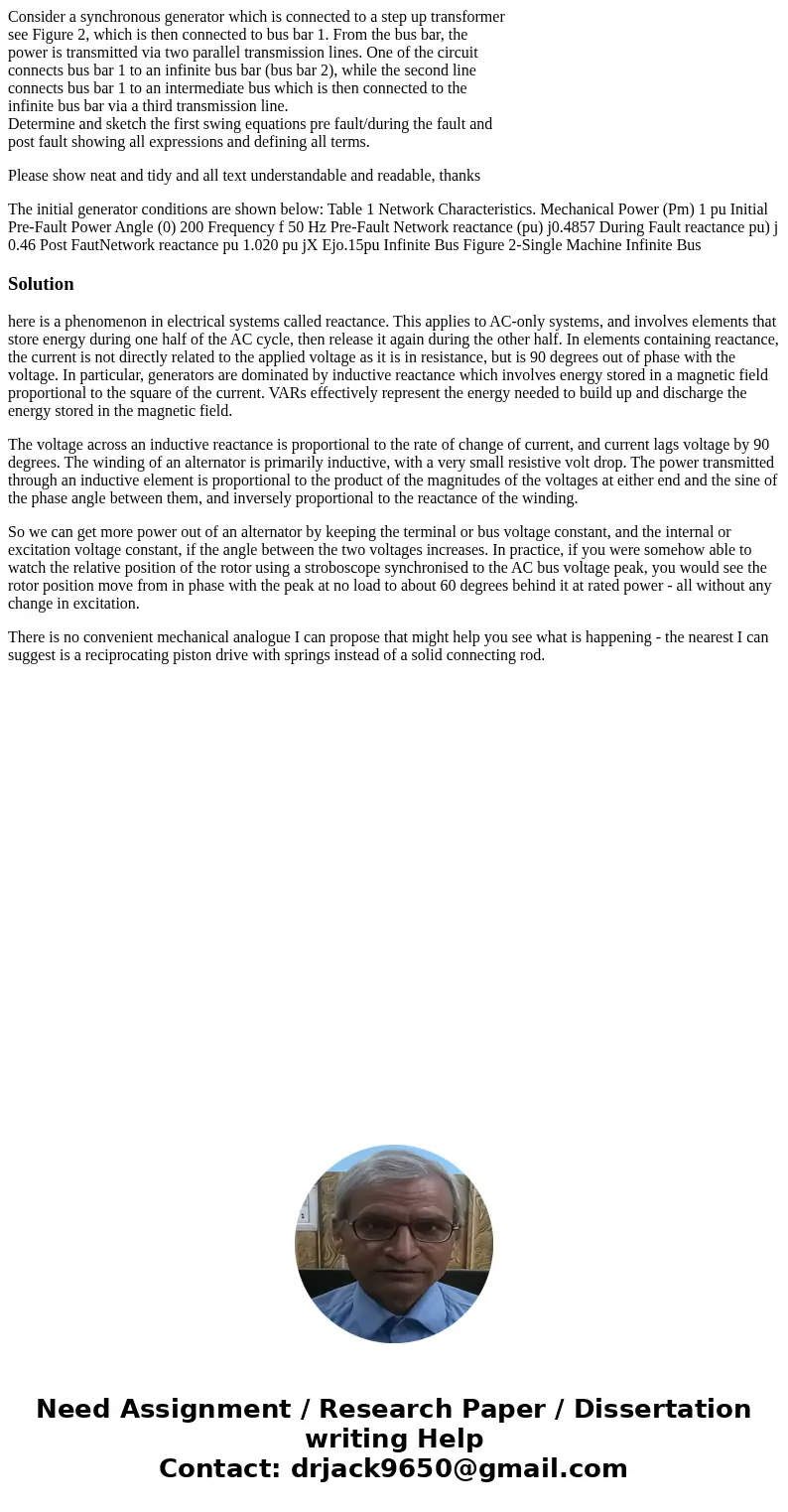Consider a synchronous generator which is connected to a ste
Consider a synchronous generator which is connected to a step up transformer
see Figure 2, which is then connected to bus bar 1. From the bus bar, the
power is transmitted via two parallel transmission lines. One of the circuit
connects bus bar 1 to an infinite bus bar (bus bar 2), while the second line
connects bus bar 1 to an intermediate bus which is then connected to the
infinite bus bar via a third transmission line.
Determine and sketch the first swing equations pre fault/during the fault and
post fault showing all expressions and defining all terms.
Please show neat and tidy and all text understandable and readable, thanks
The initial generator conditions are shown below: Table 1 Network Characteristics. Mechanical Power (Pm) 1 pu Initial Pre-Fault Power Angle (0) 200 Frequency f 50 Hz Pre-Fault Network reactance (pu) j0.4857 During Fault reactance pu) j 0.46 Post FautNetwork reactance pu 1.020 pu jX Ejo.15pu Infinite Bus Figure 2-Single Machine Infinite BusSolution
here is a phenomenon in electrical systems called reactance. This applies to AC-only systems, and involves elements that store energy during one half of the AC cycle, then release it again during the other half. In elements containing reactance, the current is not directly related to the applied voltage as it is in resistance, but is 90 degrees out of phase with the voltage. In particular, generators are dominated by inductive reactance which involves energy stored in a magnetic field proportional to the square of the current. VARs effectively represent the energy needed to build up and discharge the energy stored in the magnetic field.
The voltage across an inductive reactance is proportional to the rate of change of current, and current lags voltage by 90 degrees. The winding of an alternator is primarily inductive, with a very small resistive volt drop. The power transmitted through an inductive element is proportional to the product of the magnitudes of the voltages at either end and the sine of the phase angle between them, and inversely proportional to the reactance of the winding.
So we can get more power out of an alternator by keeping the terminal or bus voltage constant, and the internal or excitation voltage constant, if the angle between the two voltages increases. In practice, if you were somehow able to watch the relative position of the rotor using a stroboscope synchronised to the AC bus voltage peak, you would see the rotor position move from in phase with the peak at no load to about 60 degrees behind it at rated power - all without any change in excitation.
There is no convenient mechanical analogue I can propose that might help you see what is happening - the nearest I can suggest is a reciprocating piston drive with springs instead of a solid connecting rod.

 Homework Sourse
Homework Sourse